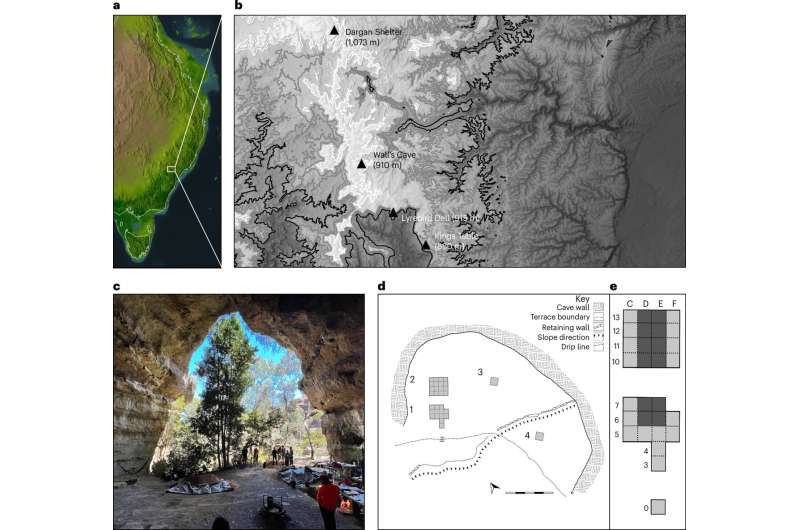Journey with us as we explore a remarkable archaeological discovery in the Blue Mountains of Australia, where ancient stories intertwine with our understanding of human resilience. This tale uncovers not just the remnants of a distant past, but also a vibrant culture that endures through time.

Imagine stepping back in time to 20,000 years ago, during the last Ice Age, in the stunning Blue Mountains. Here, you’d find the Dargan Shelter, a rocky amphitheater adorned with the whispers of ancient life. The landscape may seem inhospitable, blanketed in ice and devoid of trees, but new research tells a different story—one of survival and community.
Recent discoveries, shared in a study published in Nature Human Behaviour, reveal that this high-altitude haven served as a gathering place for our ancestors long before the modern era. It stands as the earliest evidence of human occupation in Australia’s chilly elevated terrains, transforming our understanding of this unique periglacial region.
A Rich Cultural Heritage
The Blue Mountains are more than just a breathtaking landscape; they hold deep cultural significance for Aboriginal communities. For countless generations, stories of the land have been shared, creating a rich tapestry of connection and heritage.
As researchers began their excavation, they carried not only tools but also the solemn respect for the ancestors who once roamed this area. Selecting Dargan Shelter, known to be part of an Aboriginal travel route, the team sought to unearth the stories hidden in its layers. Deep deposits signify a trove of cultural artifacts that connect the past with the present.
The air was filled with anticipation as the site was opened, accompanied by a ceremonial lyrebird song. To their delight, actual lyrebirds approached, their calls echoing the timeless connection between the ancient and the living.
While the identities of these early inhabitants remain a mystery, the Dargan Shelter likely served as a crucial stop for diverse Aboriginal groups, facilitating gatherings and ceremonies that strengthened community bonds.
Exciting Discoveries
The results from the excavation were nothing short of groundbreaking. Researchers uncovered 693 stone artifacts, with some dating back over 16,000 years. Among these were intriguing signs of life—small hand stencils and remnants of hearths that bear witness to a continuous human presence for thousands of years.
Interestingly, evidence of travel was found too, with materials sourced from areas as far as 150 kilometers away. This indicates the movement and communication between various Aboriginal communities, a testament to their resourcefulness and adaptability in such rugged terrain.
Among the significant finds was a sandstone grinding slab from 13,000 years ago, hinting at the making of tools and artifacts. Each discovery adds a piece to the puzzle of how ancient people thrived in what we now know as the Blue Mountains.
Natural Wonders and Heritage
Recognized as a UNESCO World Heritage site due to its stunning biodiversity, the Blue Mountains also have an untold story of cultural significance that deserves recognition. The recent research shines a light on this aspect, advocating for a collective acknowledgment of both nature and heritage.
For Aboriginal people, the mountains are a living memory of their ancestors—places of storytelling, survival, and community connection. Protecting and respecting this heritage is vital not just for Aboriginal Australians, but for everyone who calls this land home.
The findings from Dargan Shelter tie Australia into a broader narrative about human resilience during the Ice Age, linking our history with similar stories from around the world, even in places not typically associated with cold climates.
This exciting research embarks on a journey to revive forgotten tales and lost traditions, helping communities reconnect with their heritage and strengthen the bonds that unite them.
As we celebrate these discoveries, we’re reminded that every rock and artifact carries a story waiting to be told—stories that enrich our understanding of who we are and where we come from.
This article is republished from The Conversation under a Creative Commons license. Read the original article.![]()
If you would like to see similar science posts like this, click here & share this article with your friends!

